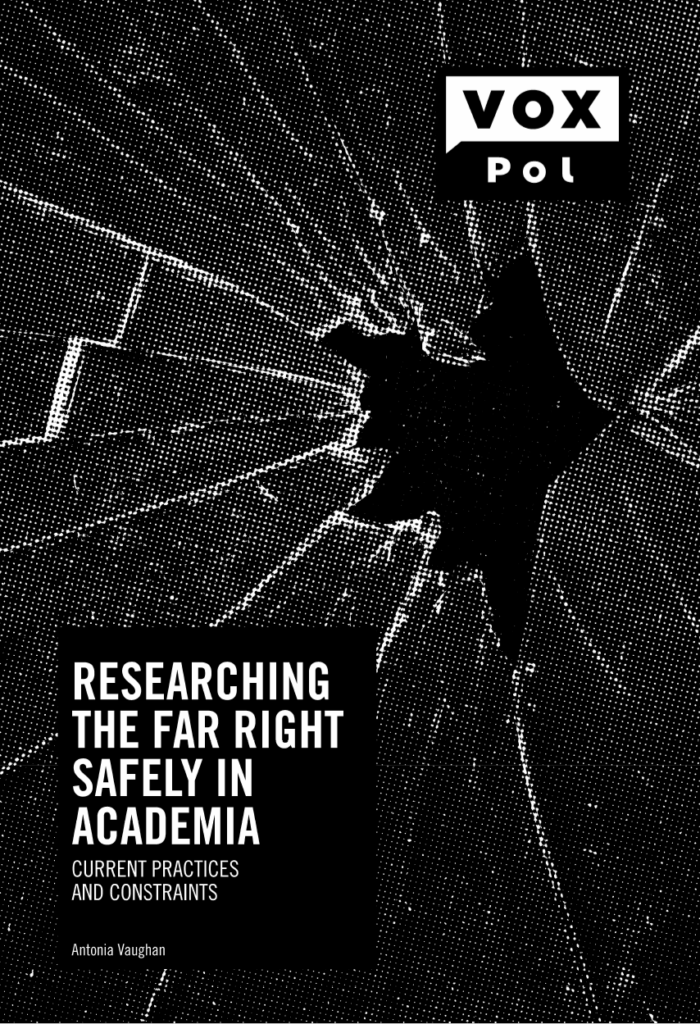far right
Researching the Far Right Safely in Academia: Current Practices and Constraints
October 9, 2025Researchers of risky topics have benefitted from a burgeoning literature on researcher safety, including that specifically focused on researching the far right. Much of this literature has focused on tackling urgent concerns and providing practical advice, targeting the individual and the institution. Drawing on 21 interviews with researchers of the far right and manosphere, this report complements these efforts by detailing ...
Online Extremist Ecosystems: How a Network of Platforms and Devices Shape Far-Right and Involuntary Celibate Extremism and Violence
September 24, 2025Far-right and involuntary celibate extremists are said to populate an “online extremist ecosystem” of digital media environments. Online violent extremists are said to use this “ecosystem” to access outcomes that were previously unattainable. Yet there remained fundamental knowledge gaps in understanding the advantageous and limits of using ecosystems to understand and address far-right and involuntary ...
Far-right digital memory activism: Transnational circulation of memes and memory of Yugoslav wars
April 30, 2025The terrorist attacks in Norway in 2011 and New Zealand in 2019 have revealed that the far-right worldwide uses the memory of the Yugoslav wars for online mobilization. Scholars working on memory activism usually deal with the liberal, self-critical memory emerging from the bottom-up activism of human rights groups while neglecting the activism of the ...
Understanding Online Platform Usage of Extremist Groups via Graph Analytics
March 4, 2025Graph analytics has become instrumental in uncovering insights across various domains, specifically in social networks. It serves as a crucial tool for analyzing the relationship between users in different online platforms. In this research, we apply methods of social network analysis to examine the communication patterns among participants in an online forum recognized for far-right ...
The Western Far Right and Digital Technology: Fuzzy Collectivity From Translocal Whiteness to Networked Metapolitics
March 4, 2025The rise of the far right has captured the attention of scholars across media studies, political science, and sociology. Digital technology played an important role in the rise of the far right and has deeply shaped this global movement. Focusing on research in Western societies (primarily Europe and North America), this review takes stock of ...
Far-right transnationalism, digital affordances, and the specter of a new geopolitics
March 4, 2025Increasing attention paid to the far right commonly glosses over transnational activity, which reflects an imperial strategy to globalize far-right thinking and its attendant discursive and physical violence against others. Empirically, I focus on far-right transnational linkages among ordinary people (not state officials) between the United States and Europe and across Europe, and between India ...
The Contagion and Copycat Effect in Transnational Far-right Terrorism: An Analysis of Language Evidence
February 21, 2025This article corroborates the continued threat of extreme right terrorism by exemplifying textually interconnected links across linguistic evidence composed prior to or during attacks in the United States, New Zealand, Germany, Norway and Sweden. A qualitative content analysis of targeted violence manifestos and live-streams, attack announcements on online platforms, and writings on equipment (e.g., firearms) ...
Reclaim the Beach: How Offline Events Shape Online Interactions and Networks Amongst Those Who Support and Oppose Right-Wing Protest
February 20, 2025In this paper we examine how offline protests attended by members of the Australian far-right shape online interactions. Tweets about the 2019 St Kilda beach rally were collected. Users were manually classified as supporters (n = 104) or opponents of the rally (n = 872). Network analysis demonstrated that interactions between the two groups increased at the time of the ...
Cyberhate The Far Right in the Digital Age
February 20, 2025Cyberhate: The Far Right in the Digital Age explores how right-wing extremists operate in cyberspace by examining their propaganda, funding, subcultures, movements, offline violence, and the ideologies that drive it. Scholars and practitioners from a wide range of disciplines and professions including criminal justice, psychology, cybersecurity, religion, law, education, and terrorism studies contribute to provide an ...
